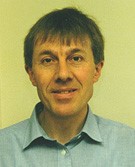Dr Paul Muir Wood 1947-2022
Paul was born in 1947 eldest son of Sir Alan Marshall Muir Wood, a distinguished civil engineer, and Winifred Leyton Wood, a wrangler in Mathematics. Paul studied at Peterhouse College Cambridge, gaining first Class Honours in Natural Sciences, followed by a PhD in Physical Chemistry. Paul became fascinated in redox reactions in biological systems and moved to the Cambridge Department of Biochemistry where he collaborated with Derek Bendall and others in studying components of the photosynthetic and respiratory electron transport chains in plants and fungi. This became the main focus of his research for the rest of his career. His two brothers, David (born 1949) and Robert (born 1951) both studied at Peterhouse, David following his father becoming a professor in Civil Engineering, and Robert reading Natural Sciences and becoming a world expert in risk management.
In 1975, Paul came to Bristol on a temporary lectureship, and worked with Tony Crofts on chloroplast systems. He was appointed to a full lectureship in 1978, when he turned his attention to redox reactions in fungi. Like his colleagues David Trentham, John Holbrook and Mike Tanner, Paul brought the rigour of physical chemistry to his study of biological systems. A nice example is his short single author paper published in 1988 in the Biochemical Journal entitled “The potential diagram for oxygen at pH7” and which summarised the complexity of the redox potentials available during the reduction of oxygen to water in a single clear diagram. This paper has received about 600 citations, Paul’s most widely read publication. Paul was awarded a DSc in 1987 recognising the excellence of his published work. Over time, Paul’s research became increasingly focussed on the mechanisms by which wood rotting fungi are able to break down the structure of wood. This rather unglamorous area is of considerable importance commercially. His research added much to the understanding of how fungi use hydrogen peroxide and hydroxyl radicals, both derived from oxygen, to attack lignin, hemicellulose and cellulose in wood. Typically Paul was frugal in his requests for apparatus and space, but over the next 30 years, Paul published over 75 papers, cited over 3,000 times and are still being cited some 50 times a year, and supervised 9 research students, a distinguished scientific record. Not only was Paul’s own research very sound, but he always found time to have fruitful discussions with his research students and colleagues, both in Biochemistry and in Biology, His extensive knowledge of redox systems was often to prove vital in the design of critical experiments and the interpretation of their results. His Head of Department, Professor Brian Chappell appreciated the important role played by Paul in the intellectual life of the Department and memorably described Paul as “a scholar in the true sense of the word.”
Paul was a gifted and dedicated teacher, lecturing on the physical and problem solving aspects of biochemistry, these are often the least popular areas for students, but greatly valued by employers seeking graduates. Paul excelled in setting numerical problems on examination papers, and was renowned as the best proof reader in the Department!
In 1987, Paul was appointed Science Tutor in the Faculty, with responsibility for caring for students across the Faculty who had failed some units. He was successful in motivating these students most of whom were able to complete an Honours Degree after good advice and guidance from Paul. He was appointed Postgraduate Admissions Tutor in the Department, and subsequently Postgraduate Admissions Tutor to the new Faculty of Medical and Veterinary Science. He took on these important posts in his characteristic quiet and modest way – always a “safe pair of hands” and respected for his fairness and compassion by both postgraduates and academic staff.
Outside the Department, Paul was a gifted pianist and organist, enjoyed singing with the University Choir, was an avid gardener, and enjoyed the countryside and walking. With Kirsty he fathered and nurtured three talented children, Elizabeth, Alastair and Helen who all went on to successful careers, however tragedy struck the family when Paul’s wife, Kirsty was diagnosed with early onset dementia, and died in 2007 at the early age of 59. On his retirement in 2010, Paul had more time for music, singing with several choirs, and worked as a guide in the University Botanic Garden, where he could share his knowledge and enthusiasm for plants with visitors. He will be greatly missed as a colleague and friend.

